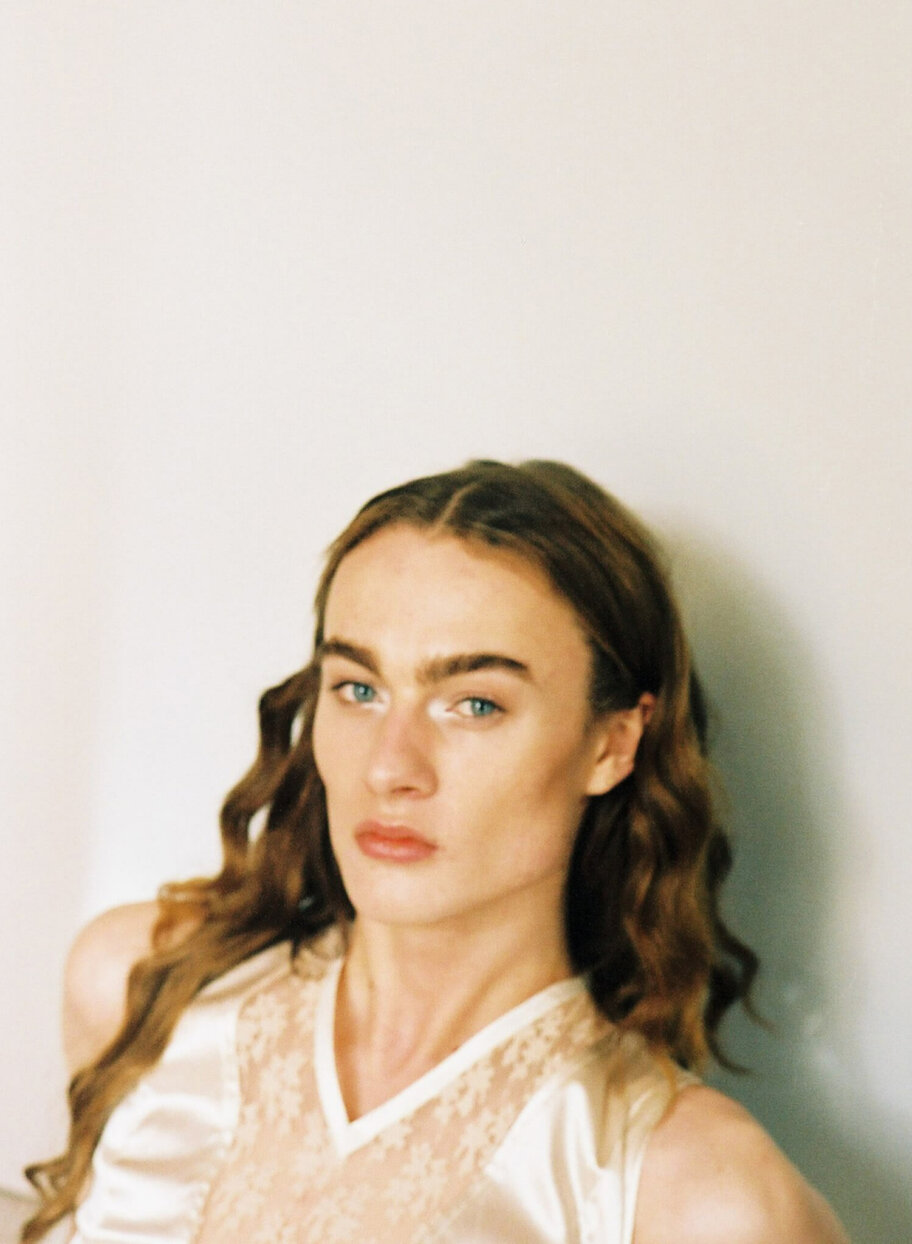
PHOTOGRAPHER RASMUS WENG KARLSEN @rasmuswengkarlsen
INTERVIEW JESPER GUDBERGSEN @yessirjesper STYLIST LOUISE BORCHERS @l0uiseb0rchers HAIR KIRSTINE ENGELL @kirstineengel @thesession.studio MAKEUP STINE RASMUSSEN @stine_rr PHOTO ASSISTANT SANTIAGO DE LA VEGA @santiago.delavega
Tell us about your childhood, and the environment you grew up in. In what ways did it help you foster such self-confidence and pride in expressing yourself exactly how you want?
I grew up in a regular Danish family just outside of Copenhagen with my parents and older brother. My surroundings were all very normal, but I always felt the need to express myself through feminine clothing and whatever people saw as female beauty. My parents were very supportive and did everything they could to make me feel comfortable. However, having a child that didn’t fit into all the regular boxes was new for them. We were all learning together. The bullying started early for me, with kids teasing me in kindergarten and people on the street looking at me weirdly. I think I developed confidence from a very young age simply because I had to. More than anything, it was survival mode as soon as I stepped outside.
Was it always a dream of yours to work as a model, and when did you decide that your path had to be a different one, being on the women’s board and working jobs traditionally?
I never dreamt of being a model actually! I was always interested in fashion, but wanted to become a clothing designer or a seamstress. At age 16, I started interning in the sewing department for Danish designer Mark Kenly Domino Tan. When he asked me to walk in one of his shows, I just thought “why not?” I had been approached by agencies a few times before that but always turned them down. It wasn’t until my current agent from Scoop Models invited me for a chat that I finally accepted an offer. I had doubts before meeting them, because I didn’t feel comfortable joining the men’s division at an agency, selling what is traditionally considered as mens clothing. We had a long conversation about gender and self-expression and decided to add me to the women’s board to see what would happened. It was all done without much fanfare, we just figured that if anyone had any questions, we would discuss details with each individual client.
How did that translate to working internationally then – how did you make the jump and was it as “easy” as it was at home in Copenhagen?
My first international job was for Maison Margiela in Paris, who sought me out on Instagram and booked me precisely for who I am as a person and what I represented. John Galliano and Margiela were doing a lot of gender exploration at that time, so that was a very easy booking and felt like a safe and comfortable space. The European market was really quite open to working with me. It wasn’t until I came to America that I was met with a lot of negativity. I had already booked major jobs in Europe, and imagined it would be straightforward for me to go to New York. We all thought that was the perfect place for me to explore more opportunities. While my portfolio did get me in the door at the top agencies, it wasn’t that simple. Some were kind and explained that it was just too much work for them to take me on, but most others were extremely rude and told me that I had no chance of ever making it in New York. So going there was definitely a weird eye opener. Back home I had been used to having only direct bookings where people were flying me in for a job. The US was a bit of a struggle at first, but I eventually found Fusion Models and ended up working more in New York than any other market.
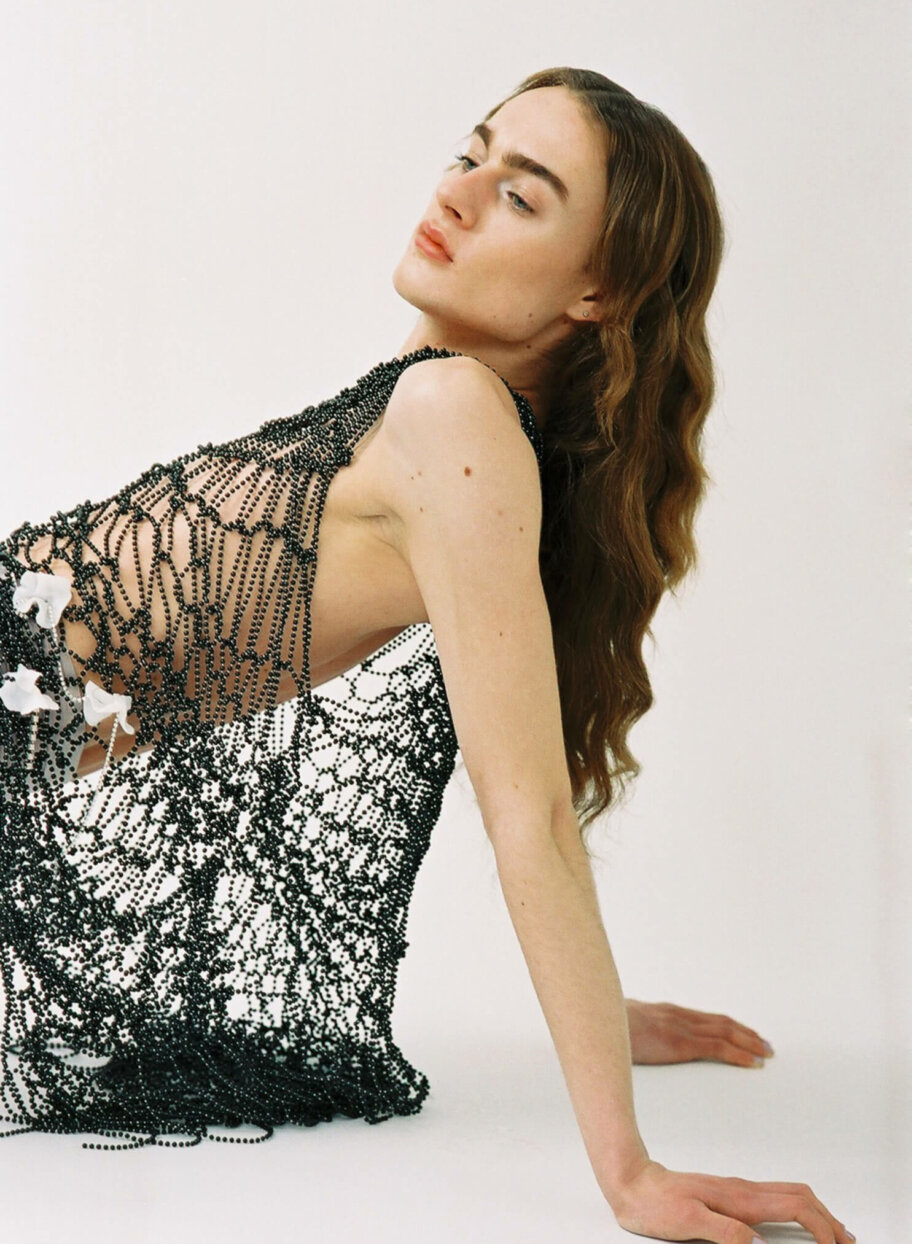
When speaking about gender-expression and the representation of gender-fluidity, what changes are you experiencing in the fashion industry ?
I feel like people and companies have more awareness when casting. Representation actually is considered now and whether people decide to move forward with diversity or not, they are taking a stand one way or the other. I’m not a big fan of the term “Woke’, but people do seem to be more woke about people’s pronouns, and genders, and how to act in a safe way around people expressing their gender identity, sexuality, or whatever it may be that is different to the norm. There has definitely been more representation over the years I have been working in fashion, and while there is still a lot of work to do, we are moving somewhere better
What are some of the improvements you’ve seen in the five-plus years you’ve worked as a model, and how do you feel you’ve personally left your mark ?
When I was first working in New York, there were about 4 models who were trans, nonbinary or in some way not cis-gendered – and we were public and vocal about our identity. At castings, people would be rude and discriminating, send us to the back of the line, ask inappropriate questions… I feel like there are now quite a few more successful models who don’t fall into the regular binary. It’s my hope that by going back out on those castings, even though they could’ve become a traumatic experience, and by ending up walking the runways around the world, I was able to help create some kind of change. I see more of us now than ever before.
Who is someone you looked up to for inspiration when you were younger? Why were they meaningful to you then, and what do they mean to you now?
I think David Bowie and Alexander McQueen were the two most important influences on me, or at least where I could see myself reflected the most. People always speak about how representation matters, and I really deeply feel like I did not have the representation I was eager to see. Those two gave me something that was close to what I wanted to see. Bowie was always playing with gender stereotypes, which was inspiring growing up in a very heteronormative world. As for McQueen, there was always an element of something very special and new, something no one had ever seen before. I identified with that because I saw myself in that way too. I still look to both of them for inspiration.
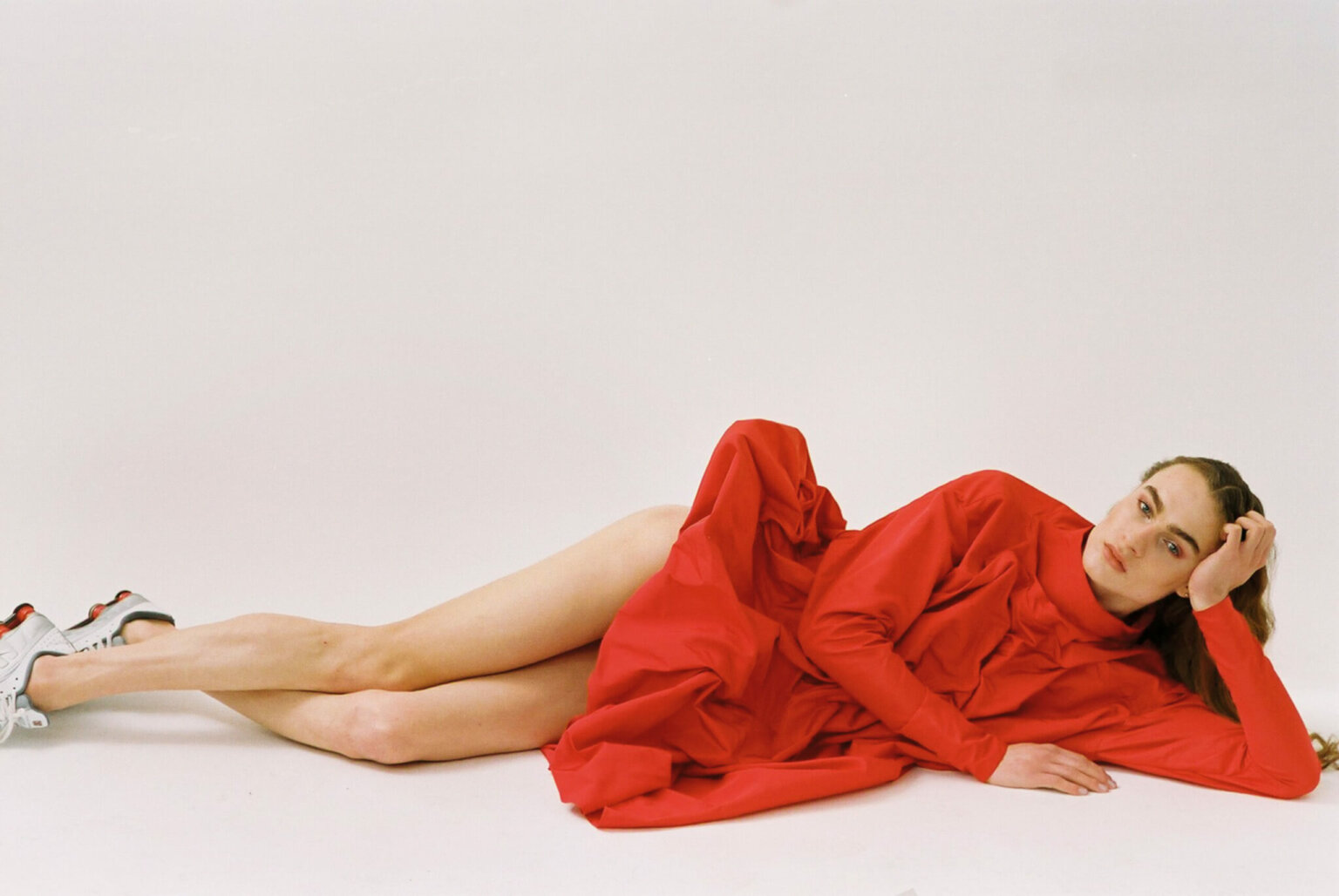
If you could speak to yourself at age 14, what would you tell young Vincent? What is some advice for young people who are going through the experience of feeling ‘other’?
There isn’t an easy answer to the second part of the question, because I think it very much depends on who I am speaking to and the way in which they see themselves outside of the “norm”. I get a lot of DMs from young people who feel insecure, and what I tell them is always very different depending on their unique story. If I were speaking to a young version of myself, I would have to stick with something we all have heard before: As you get older, it will get easier. Your brain is going to develop a better understanding of how the world, and you yourself, work. I would also tell myself that even though it can feel a bit lonely at 14, it’s okay to be different, you don’t need to be anyone else.
How did you fall in love with makeup, and what does it mean to you on a daily basis to have this extra tool to express yourself?
My mom was never really interested in makeup. In fact, neither her nor any other woman in my family had that extremely feminine energy, with a full face of makeup and a head to toe look. My close friend in school got really into makeup when we were young and I did play around a little bit, but it really wasn’t until I started modelling that I really started enjoying it this much. Seeing someone like Pat McGrath work her magic on me, I began understanding that what you can do with makeup is pretty amazing. You can really change yourself with a little bit of effort. It’s a fascinating tool.
A somewhat hard to define concept, what does ‘natural beauty’ mean to you personally?
When I find someone really beautiful, it’s usually someone that is very self-acceptant. People who accept themselves for who they are and are confident about it. It could be the simplest appearing person or the most extravagant one, but if that person is confident in who they are, they just have a certain aura about them. That is what I find very beautiful.
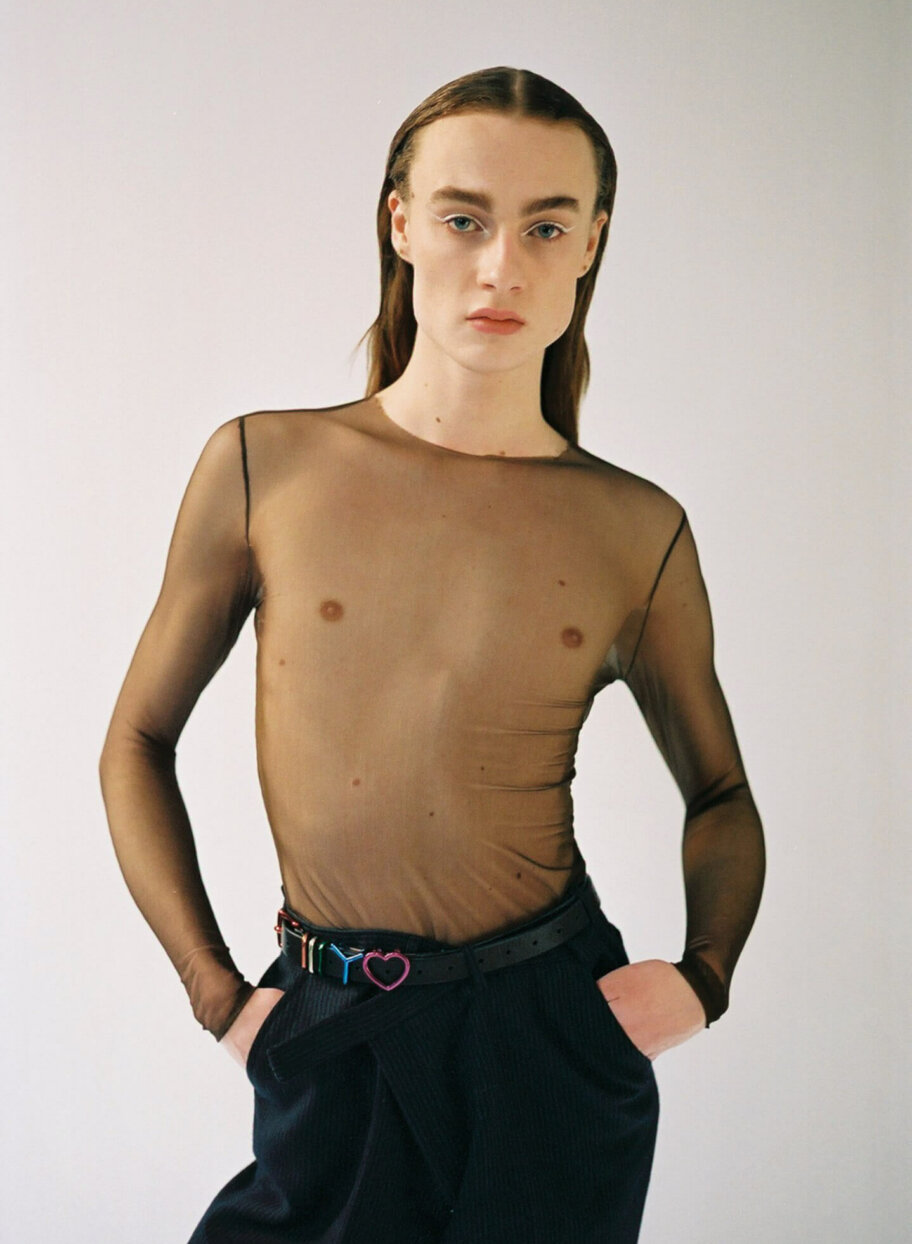
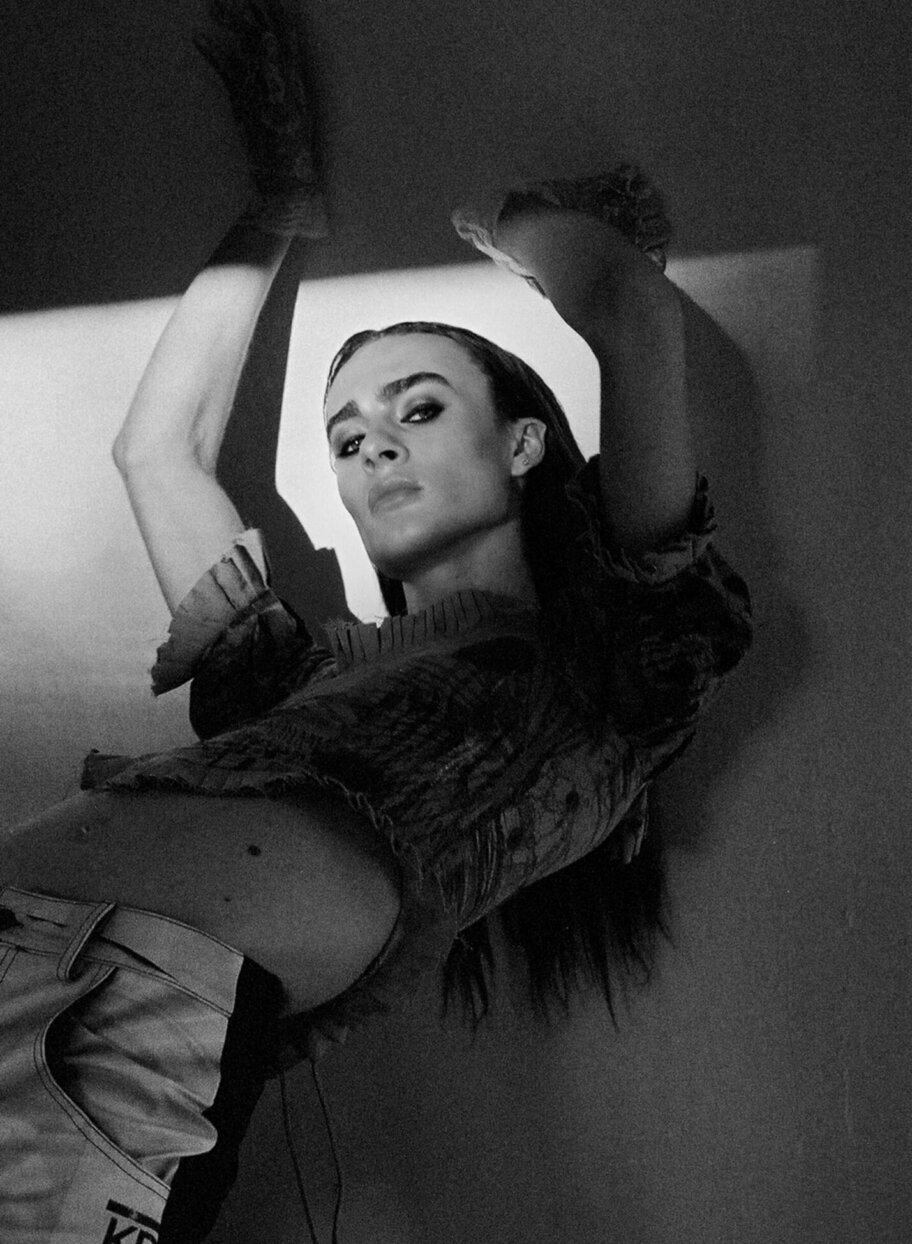
At submission beauty, we celebrate diversity and believe in respecting the self-expression of every individual. Can you explain your thoughts on the best way to go about this as a company, as well as on an every-day level as an individual?
A do’s and don’ts, according to Vincent, so to speak…
When speaking with someone about a subject that is extremely personal and sensitive, it’s so important to make sure you have done the proper amount of research. Know how to speak about gender identity, race – whatever it may be – before going into that conversation. You have to educate yourself about these topics before you speak to someone who is feeling them in their own body every day. I get contacted by a lot of companies, and my main concern is always to understand exactly how they want to represent me and use me for their brand. Companies also need to just show some respect! Consistency is crucial and unfortunately often forgotten. I have personally been comfortable working with a company and felt like we were sending a message, only to have felt thrown away when they were “done” and got out of me what they needed. Just be there, and continue to be there.
Within the conversation about gender identity, what is something you feel people are not speaking about? What is missing from the conversation?
I really feel like the conversation develops every day. New people join in, new people are telling their stories. There’s still so much missing from the conversation that it’s hard to single one thing out, but at least we are speaking about these things now. One thing that is problematic in my view is how we so quickly jump from one hot topic to the next. At one point every one seemed to finally begin to want to understand what it means to be trans, and once that seemed “dealt with”, we all jumped to they/them pronouns and understanding what non-binary means and left the trans conversation behind. Once again, it feels like we need more consistency and to not forget about the conversation we had yesterday, we need to bring it all with us.
What is your best advice regarding taking care of oneself – how do you do that yourself?
I keep my safe spaces close at all times, they are the most important thing to me. I make sure to take the time I need to feel good about myself. I also keep the people that do me good close at all times, and keep others at a distance. I guess you could say that my inner circle of friends are my safe space.
| Cookie | Duration | Description |
|---|---|---|
| cookielawinfo-checkbox-analytics | 11 months | This cookie is set by GDPR Cookie Consent plugin. The cookie is used to store the user consent for the cookies in the category "Analytics". |
| cookielawinfo-checkbox-functional | 11 months | The cookie is set by GDPR cookie consent to record the user consent for the cookies in the category "Functional". |
| cookielawinfo-checkbox-necessary | 11 months | This cookie is set by GDPR Cookie Consent plugin. The cookies is used to store the user consent for the cookies in the category "Necessary". |
| cookielawinfo-checkbox-others | 11 months | This cookie is set by GDPR Cookie Consent plugin. The cookie is used to store the user consent for the cookies in the category "Other. |
| cookielawinfo-checkbox-performance | 11 months | This cookie is set by GDPR Cookie Consent plugin. The cookie is used to store the user consent for the cookies in the category "Performance". |
| viewed_cookie_policy | 11 months | The cookie is set by the GDPR Cookie Consent plugin and is used to store whether or not user has consented to the use of cookies. It does not store any personal data. |